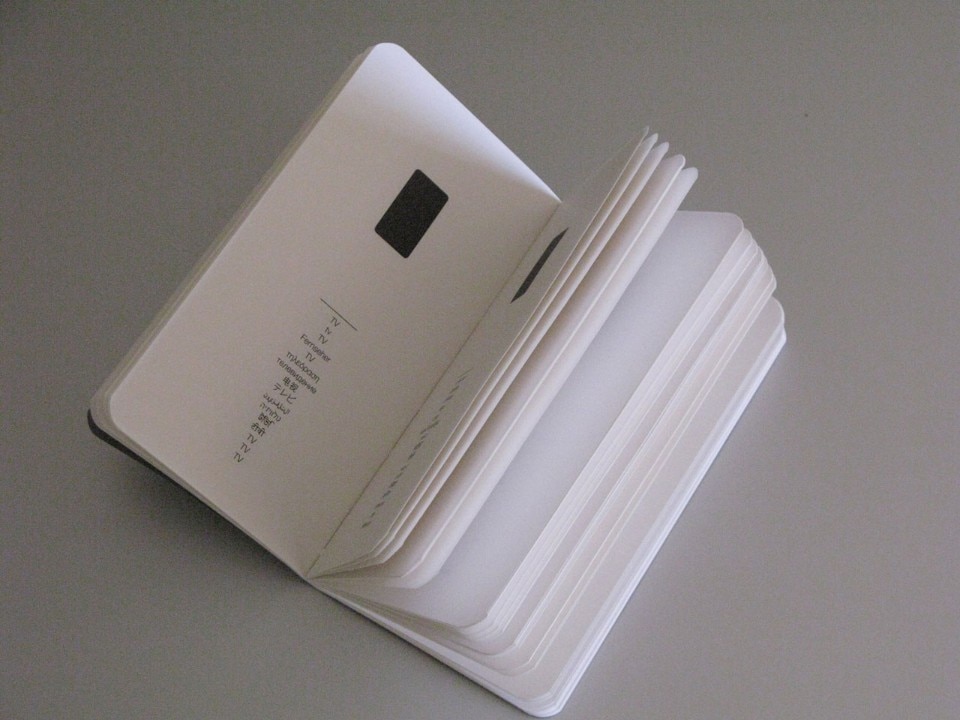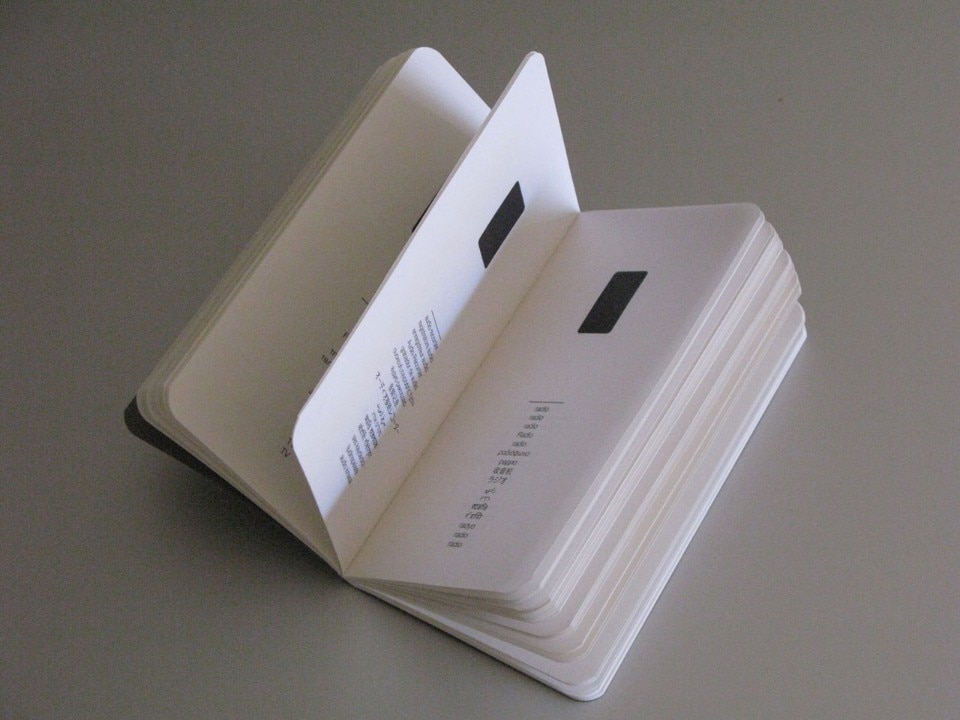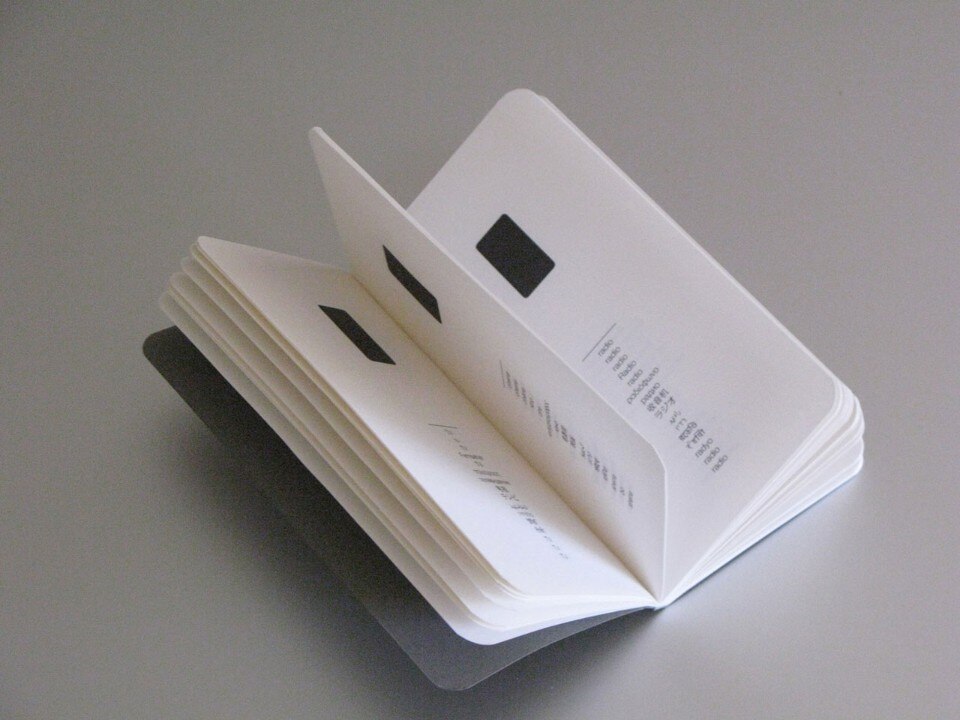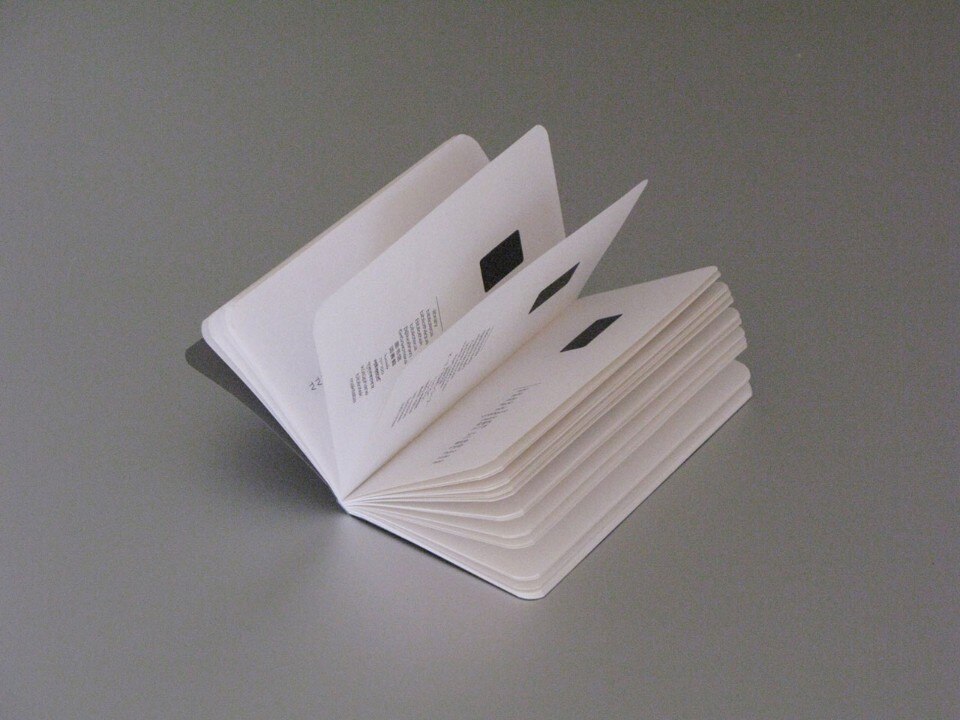Iconographic handbook for the contemporary designer is a small book, measuring 8.5 x 15 cm, printed in 600 editions by the Pavia-based publisher La grande Illusion. The text in question, a reflection on the state of contemporary graphic design consists of 96 pages, rather provocatively all the same: in the centre a black rectangle with rounded corners and, a bit like a caption, the name of the object represented in different languages: Italian, English, French, German, Spanish, Greek, Russian, Chinese, Japanese, Arab, Hebrew, Bengali, Hindu, Turkish, Swedish and Swahili. It was better to come clean: reviewing it is impossible.

Francesca Esposito: A survival handbook for the graphic designer. When did you get the idea for this book?
Guido Scarabottolo: I don’t know exactly when it was born, but given that I am an illustrator and graphic designer, I’ve spent many years striving to understand things. I realise that if I draw a telephone with a round dial, like the ones you used in my day, young people can’t recognise it as an object. I was interested to see how many of those things that in the past had a set form, very linked to their function, have now been substituted by a black rectangle. So I found myself compiling a list of objects – from telephones to books and calendars – all substituted over time by a conventional form made in order to be seen in a simple way.

Francesca Esposito: So there is a black rectangle on every page, except one that has a skull on it.
Guido Scarabottolo: I did it just to see what remained outside this form, it is a poetic liberty that I took.
Francesca Esposito: And what does remain outside?
Guido Scarabottolo: Death. It is a thing that is now represented by a skull, that is also a theme that appears often in my illustrations.
Francesca Esposito: Who would you recommend this handbook to?
Guido Scarabottolo: It’s a visual thought process: I work with images and I have always been embarrassed to use words. My job is to provoke thought via pictures: I open the window, then people see what they want. Mine is none other than a free interpretation and a personal suggestion.
Francesca Esposito: For many years you have been working in the field of illustration. What is the situation of graphic design today?
Guido Scarabottolo: The question is bigger, this black rectangle is becoming what was once the press, that is now losing its monopoly. This has consequences for the form of images and writing: the New Yorker makes animated covers for its digital editions, the New York Times changed the future of online journalism with Snow Fall, a four-hour reportage with videos, photos and multimedia graphics. The static image has been replaced by another in movement that uses text, illustrations and acting to transmit content: this has led to consequences for illustrators.

Francesca Esposito: Do you have confidence in the future of graphic design?
Guido Scarabottolo: It’s not a question of confidence it’s a fact. We can oppose it and be nostalgic or we can go along with this change. But there is a small, fundamental, trait that makes a static image different from a moving one: in the first case, you decide how long you look at it for; in the second the roles are reversed and we manage your time.

Francesca Esposito: Illustrator but trained as an architect at Milan Polytechnic. How much has this path influenced your career?
Guido Scarabottolo: It has influenced it more than might seem. In my way of approaching a drawing there are constant references to that culture of design that I took in over the course of my studies. There is no room for randomness. This handbook is nothing more than a provocation that addresses with irony the problem of the loss of iconic identity and a consequent homologation of forms. This religious aura that cloaked the world of the image from the Bauhaus years is gradually disappearing. In the world of photography new technology has brought about a certain democratisation; in graphics there is much turmoil brought about by the crisis, that has created a challenging situation for a job that today has become a bit presumptuous. Machines now do everything, including replacing work, for now manual and soon intellectual.
Francesca Esposito: Will we still be human?
Guido Scarabottolo: We’ll still be us. And we’ll go somewhere.

